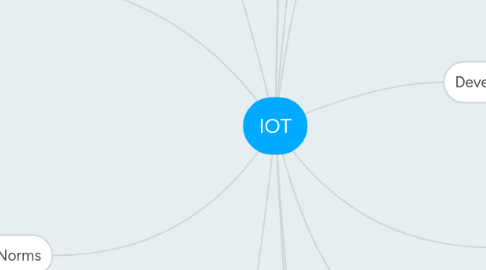
1. concept IoT IoE IoA
1.1. IoT: internet of things
1.2. IoE: internet for everythings
1.3. IoA: internet for anythings
2. Security
2.1. integrity of data
2.2. confidentiality of data
2.3. privacy of users
2.3.1. pseudonimity
2.4. authentification on a proper and secure way
2.5. trust in the services
2.6. availability
3. Missing Features
3.1. generation of model from nodered libraries
3.2. downloadable model from IoT sensor for example sensortag
4. Standarts-Norms
4.1. ThingML
4.2. IoT-A 257521
4.2.1. Authorization
4.2.1.1. RBAC: role-based access control
4.2.1.2. ABAC attribute-based access control
4.2.1.3. XACML exXtensible Access Control Markup language
4.2.1.3.1. extension for distribution when (policies contain confidential inforamtion) (authZ not enough powerfull for complex policy evaluation task)
4.2.2. Authentification
4.2.2.1. Binding of identity to a subject
4.2.2.1.1. knowledege-based: what the user knows
4.2.2.1.2. biometric-based: what the user is
4.2.2.1.3. possession-based: what the user has
4.2.3. Identity Management
4.2.4. Key Exchange and Managemrent
4.2.5. Trust & reputation
5. Privacy
5.1. Homomorphic encryption
5.1.1. Homomorphic encryption is a form of encryption that allows computations to be carried out on ciphertext, thus generating an encrypted result which, when decrypted, matches the result of operations performed on the plaintext.
6. Experts
6.1. Sciences&Vie
6.1.1. Ludovic Le Moan (sigfox)
6.1.1.1. fondateur SigFox
6.1.2. Stéphane Curtelin (LG)
6.1.3. Fabrice Massin (markting ACER)
6.1.4. Jérôme Boissou
6.2. CEA
7. Protocol
7.1. Bluetooth
7.2. NFC
7.3. IP
7.4. RF
7.5. BLE
7.5.1. Bluetooth Low Energy
7.5.2. Nokia, wibree
7.5.3. Ten times lower energy for same aerea
7.5.4. Smart
7.6. SigFox
8. sensors
8.1. SensorTag
9. Companies
9.1. Texas Instrument
9.2. IBM
9.3. Google
9.4. Amazon
9.5. LaPoste
10. ResearchTeam
10.1. Leti
10.1.1. [email protected] /letidays in 2014
11. Development Environment
11.1. NodeRed
11.1.1. make a plugin to reverse a nodered to a model
11.1.2. reverse the libraries

